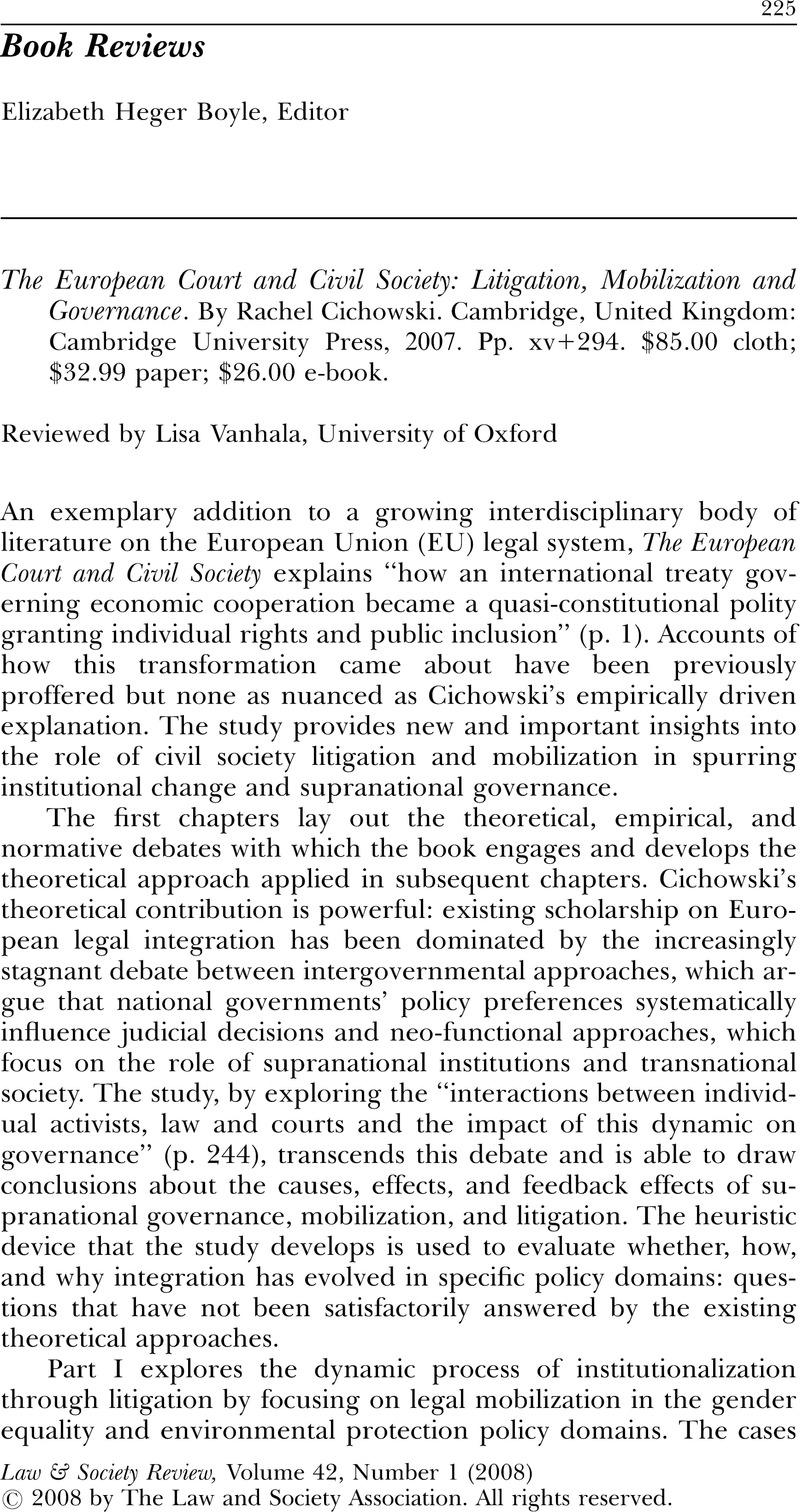No CrossRef data available.
Article contents
The European Court and Civil Society: Litigation, Mobilization and Governance. By Rachel Cichowski. Cambridge, United Kingdom: Cambridge University Press, 2007. Pp. xv+294. $85.00 cloth; $32.99 paper; $26.00 e-book.
Review products
The European Court and Civil Society: Litigation, Mobilization and Governance. By Rachel Cichowski. Cambridge, United Kingdom: Cambridge University Press, 2007. Pp. xv+294. $85.00 cloth; $32.99 paper; $26.00 e-book.
Published online by Cambridge University Press: 01 January 2024
Abstract
An abstract is not available for this content so a preview has been provided. Please use the Get access link above for information on how to access this content.

- Type
- Book Reviews
- Information
- Copyright
- © 2008 Law and Society Association.


